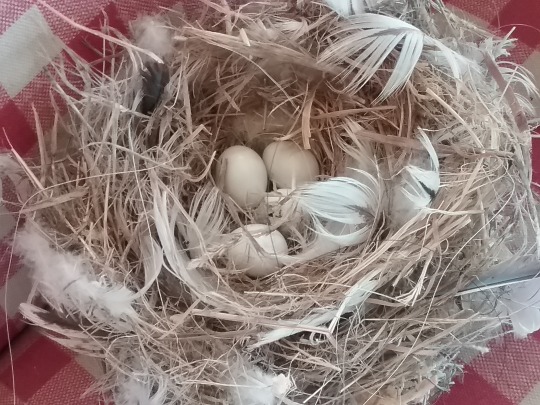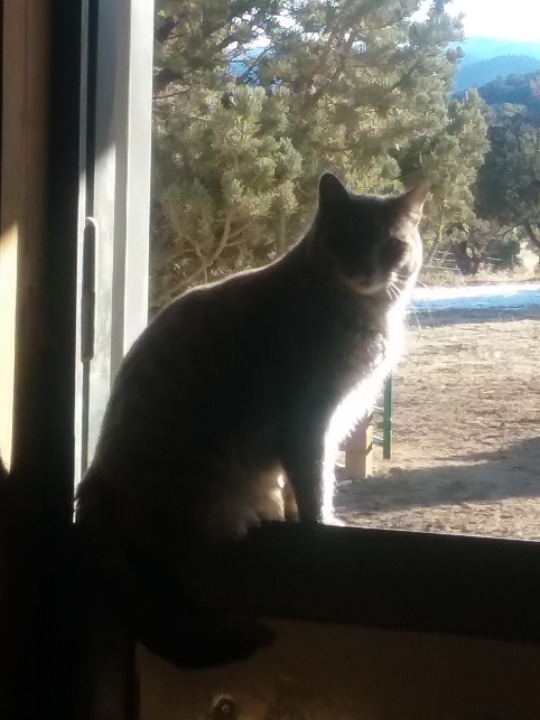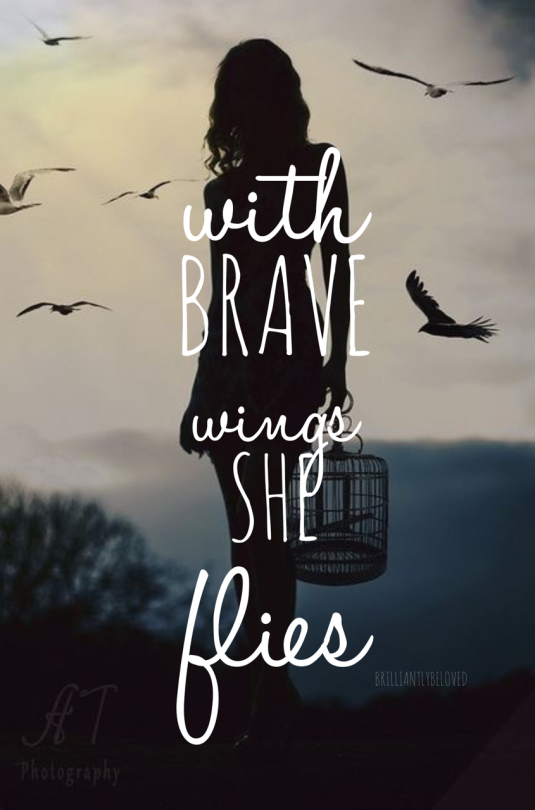Potential & Risk

Yesterday I cleaned out our bluebird house. I found a lovely nest and five unhatched tiny perfect eggs. It broke my heart. I remembered this past summer when the bluebirds would swoop to scare away our barn cats, Rita and Mari. I think one swooped too close. A life lost, and more, the eggs in the nest not hatched. It seemed like a promise unfulfilled, wasted potential.
I realize that many birds are killed by free ranging domesticated cats. Estimates range as high as 3.7 billion a year. More, many of the bird species falling victim are considered threatened. As an animal person, who knows the value of a good barn cat, I also care very much about the lives of birds and small mammals. I researched ways to take steps in my own life to reduce our cats’ predation on our birds. I believe I need to strike a balance between the needs of cats and the needs of wildlife facing the feline threat.
The National Wildlife Federation has a practical list of advice to help minimize the wildlife lost to cat predation. Our cats, Mari and Rita, are beloved companions and are mousers here at Foxhaven. The barn is their domain, and I have never seen evidence of a rodent, except for a dead half-eaten one, in our barn. For this I am thankful. We can leave bags of feed on the floor with no worries. We put our horses and cats up at night in the barn. The evening’s entertainment being the cats bounding about and climbing on the rafters. I wonder what the horse’s think about the acrobatics.

Some practical advice I discovered that can help us include (1) providing cover for the birds (trees, shrubs), (2) placing feeders and birdbaths 10-12 feet from hiding placed for cats, (3) removing bird feeders to favor native plants with berries and seeds. Birds congregate around feeders which, in turn, attract hunting cats; whereas, native plants won’t cause birds to flock. (4) I may investigate motion sprinklers near my bird house, since I plan to plant wildflowers around it this summer. (5) Spay, neuter and adopt a cat, if so inclined. AND do not abandon an animal. Those that survive contribute to the feral stray population that takes it toll on wildlife.
I also discovered that some people use
moth balls; don’t, they are toxic! Also, bells or colorful colors don’t work. A tinkling
bell is not something wildlife associates with a predator. Likewise, bright
colors are not associated either, and many species don’t see color.
Passions rise between cat and bird lovers over this topic. Resist the urge to write off the others concerns. Science is clear on the impacts of cats on wildlife populations. For my part, I am going to put some of ideas I discovered into action. I want to continue to watch the birds from my deck. I need and love my cats. I want a nesting place for bluebirds that is safer. I hope to find an empty nest this time next year.
As I look at this nest, it also reminds me of the potential we all have inside of us. It can be realized or not. In my quest to be mindful and to listen, to myself and others, I feel the push & pull of potential in many conversations and thoughts. For my own part, I have resisted the pull or have allowed myself to become distracted by the familiar. Why? The risk of failing and the risk of leaving my comfortable nest. The question remains, “Do I want to fly?”
